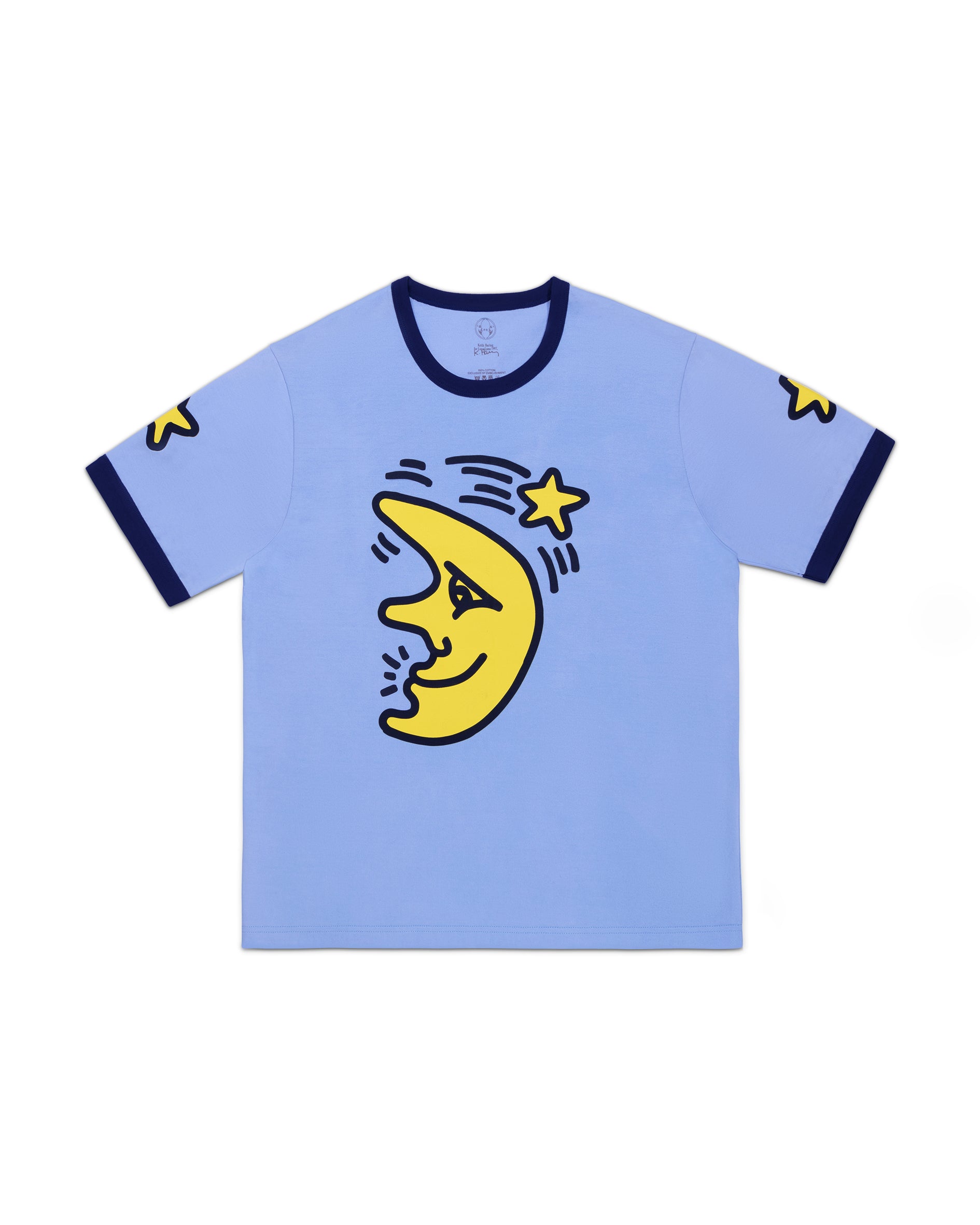Haring designed a brightly colored carousel featuring three-dimensional versions of the characters from his iconic line drawings for the audience to ride. These characters also appeared on large tarps displayed throughout the park.

Keith Haring, Industrially fabricated tarps, Luna Luna, Hamburg, Germany, 1987.

Keith Haring, Painted carousel, Luna Luna, Hamburg, Germany, 1987.
Keith Haring was a painter known for his instantly recognizable, pattern-like visual language. Uniting the bright colors of Pop Art, the whimsy of cartoons, and the deviousness of graffiti, Haring developed a distinct, iconic style marked by bold, black outlining. While studying at the School of Visual Arts in New York, Haring drew inspiration from outside the academy, making friends with legendary artists of the downtown arts scene, including Jean-Michel Basquiat and Andy Warhol. In 1980, while still a student, he began to draw on top of blank advertisements in subway stations across the city, creating trademark symbols such as the radiant baby, the dancing Everyman, or the barking dog—symbols that would become ubiquitous throughout the city and synonymous with his name.

Keith Haring, André Heller.

Keith Haring.
A self-portrait of Haring holding a paintbrush adorns two panels at the center of the carousel.
While the energy around these public works quickly made him a local legend, Haring simultaneously began exhibiting paintings and prints at galleries and museums worldwide. In addition to his fascination with existential themes such as birth, death, love, childhood, sex, and war, Haring was a highly political artist, engaging with previously taboo subjects like drug abuse, AIDS, gay male sexuality, and nuclear apocalypse. Haring created numerous murals throughout New York City in the 1980s, including the famous Crack is Wack (1986) mural in East Harlem, which initially led to his arrest before being designated a landmark by the city.

Keith Haring.

Keith Haring.
For Luna Luna, Haring envisioned a brightly colored carousel featuring seats in bubble-gum pink, lime green, and tangerine orange—three-dimensional versions of the characters from his iconic line drawings—for the audience to ride. These characters also appeared on large tarps displayed throughout the park. A self-portrait of Haring holding a paintbrush adorns two panels at the center of the carousel.

Fairground view: Keith Haring, Painted carousel and industrially fabricated tarps, Luna Luna, Hamburg, Germany, 1987.

Fairground view: Keith Haring, Painted carousel, Luna Luna, Hamburg, Germany, 1987.















